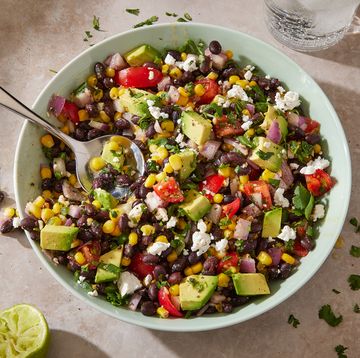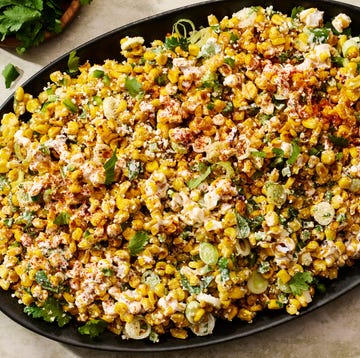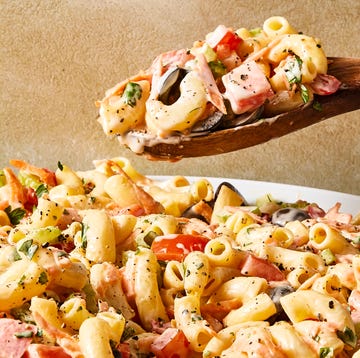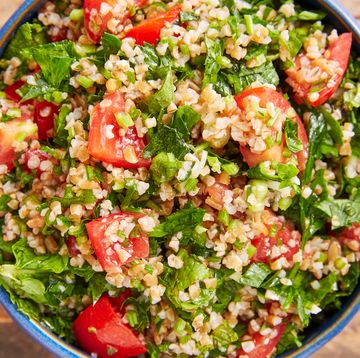
Yields:
20 c.
Prep Time:
15 mins
Total Time:
45 mins
Kimchi is a broad name for a type of Korean banchan—or, side dish—that is served alongside most meals in Korea. In fact, it is probably more accurate to refer to kimchi as a method of fermenting and preserving vegetables. This version features napa cabbage and daikon radish, two ingredients commonly found in kimchi in US and International supermarkets. Serve kimchi alongside bibimbap, stir it into fried rice, or fold it into creamy pasta.
Kimchi has existed for thousands of years on the Korean peninsula, but it's actually only in the last few centuries that chili pepper was added, likely via Portuguese traders. Now, gochugaru (Korean chili pepper powder) is standard in many types of kimchi, as in this Napa Cabbage and Daikon kimchi. It's a handy shortcut version for kimchi lovers that want quick—but still flavorful—kimchi. It's unconventional to begin by steeping the cabbage and daikon in a salty hot water bath, but it speeds up the process, getting you closer to ready-to-eat kimchi.
When preparing the cabbage, cut the bottom core with a knife and then use your hands to split open the halves so that the leaves are intact and not cut with a knife. For spicier kimchi, increase the ¾ cup gochugaru to 1 cup. Can't find salted baby shrimp? Use 1 tablespoon of fish sauce, instead.
P.S. Make sure to open the kimchi container once in a while. This ensures it won't explode!
For more about kimchi, check out our guide "What is Kimchi?"
Advertisement - Continue Reading Below
Ingredients
- 9 cups
water, divided
Kosher salt
- 1
large daikon radish (about 1½ lb.), cut into 1” cubes
- 1
medium napa cabbage (about 2 lb.), slit through the core and hand-ripped into 8 wedges
- 1/4 cup
sweet rice flour
- 3/4 cup
gochugaru
- 1/4 cup
fish sauce
- 1 Tbsp.
salted baby shrimp
- 12
cloves garlic, minced
- 1 Tbsp.
minced fresh ginger
- 6
scallions, cut into 1”-thick pieces
- 1
large yellow onion, sliced
- 4 Tbsp.
granulated sugar
Directions
- Step 1Combine 8 cups water, 1 cup salt, and daikon in a medium pot. Bring to a boil over high heat.
- Step 2Place cabbage in a large bowl; set aside.
- Step 3Meanwhile, prepare paste for kimchi: In a microwave-safe medium bowl, whisk together sweet rice flour and 1 cup water. Heat in 30 seconds intervals, whisking in between, until thick and pudding-like. Stir in gochugaru, fish sauce, 2 teaspoons salt, salted baby shrimp, garlic, ginger until well combined. Fold in scallions and onion; set aside.
- Step 4Once daikon mixture has come to a boil, pour over cabbage. Make sure cabbage is completely submerged. Let sit until cabbage is pliable, about 15 minutes. If not, continue soaking for another 5 minutes.
- Step 5Rinse and drain cabbage and daikon at least 2 times to remove excess salt, discarding water from bowl, then return to same bowl. Sprinkle sugar on top and toss until well coated.
- Step 6Generously lather paste in between each fold of cabbage to ensure all pieces are coated. Repeat until all cabbage pieces are fully coated. Excess paste will fall out of cabbage and should be used to coat daikon radish.
- Step 7Eat fresh or let ferment for at least 2 days at room temperature before storing in an airtight container in fridge.
- Step 8When storing to ferment, gently fold kimchi in half lengthwise and then wrap loose ends of leaves around equator of cabbage. Tightly pack cabbage and daikon in large glass container one by one so that there are barely any gaps between kimchi. Scrape any remaining paste and juices into container. As kimchi sits, extra liquid and gas will accumulate, so be sure to leave at least 2” room on top end of container.
- Step 9Open container once every 12 hours before refrigerating to release any gas buildup and push kimchi under accumulated juices if necessary. Once fermented, store in an airtight container in fridge. Be mindful that kimchi continues to ferment in the fridge so be sure to eat kimchi within a week.
Advertisement - Continue Reading Below
Advertisement - Continue Reading Below
Advertisement - Continue Reading Below












